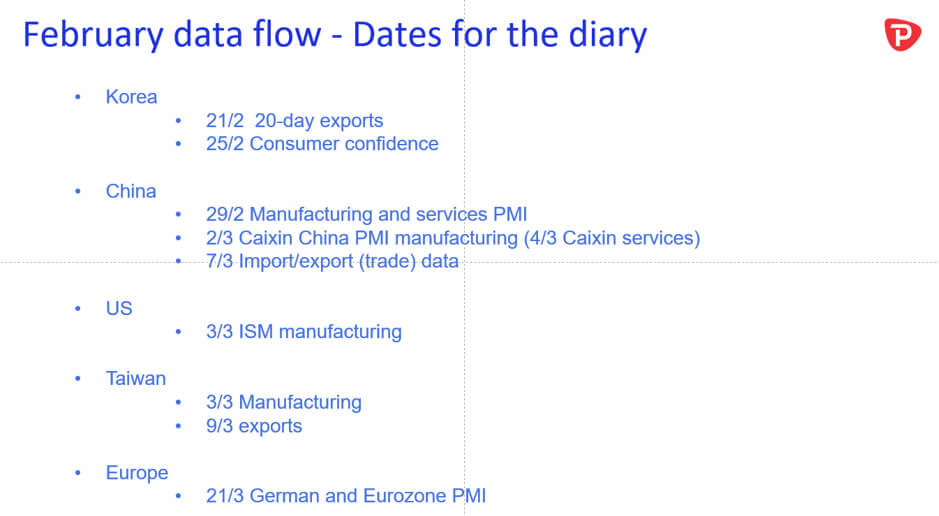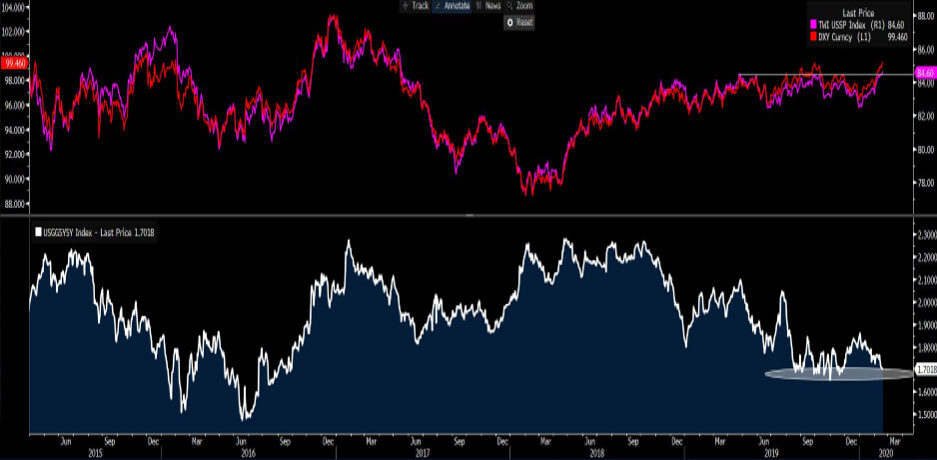Spread bets and CFDs are complex instruments and come with a high risk of losing money rapidly due to leverage. 73.7% of retail investor accounts lose money when trading spread bets and CFDs with this provider. You should consider whether you understand how spread bets and CFDs work, and whether you can afford to take the high risk of losing your money.
- English
- 中文版
Implied volatility remains anchored and there is certainly no real panic playing out in Asian equities today either - so despite Apple’s Q2 sales guidance, or the poor German/EU ZEW survey, volatility has remained sanguine.
It’s gold that fascinates though, and while some have made the case that gold has been a portfolio hedge against economic fragility, mitigating the need to sell out of core equity exposures, I am seeing signs that there is a solid speculative case for long exposures -especially if the data we see in the calendar below really starts to deteriorate and central banks don’t follow the markets leads with a dovish tilt. Here, I have specifically cherry-picked data that I feel is going to give us greater clarity as to the extent of the impact on economics, derived from the incredible measures imposed by Chinese authorities.
I talk about the current trading dynamics for gold and the near-term investment case in the gold weekly video above.
My own view is if these data points are weak, notably the China manufacturing and service data on 29 February, which falls on a Saturday (think gapping risk), and we also see this resonating in a renewed down turn in US ISM manufacturing, then markets will ramp up their expectations of central bank action. In this scenario, there will be a disconnect, resulting in higher market volatility, leading to lower real bond yields and further gold appreciation.

The question then falls on whether to buy gold in AUD, EUR or USD terms. One chart that has captured my attention is that of the relationships between the USD and US inflation expectations. For inflation expectations, I have looked at US 5y5y forward ‘breakevens’ – effectively, a tradable instrument that expresses a view on where traders see US inflation over a five-year period starting in five years’ time.

Source: Bloomberg
We have seen clear one-way flow into the USD, as investment and savings flows pile into US assets, seeing so few attractions elsewhere. Trump will soon be out on Twitter talking down the USD in far more aggressive fashion, but when inflation expectations (lower pane) head through 1.65% then the Fed will turn more dovish, although the rates market will lead this. Gold is only going one-way in that situation.
As always, it’s the rate of change in inflation expectations that matters, but should the Fed sense the strong USD is a tailwind to the disinflationary pressures then we will see the market ramp-up expectations of easing. The one-way nature of the USD will not go on forever without troubling central banks. For those of you who remember the term ‘currency war’, the seed has been planted.
Ready to trade?
It's quick and easy to get started. Apply in minutes with our simple application process.
The material provided here has not been prepared in accordance with legal requirements designed to promote the independence of investment research and as such is considered to be a marketing communication. Whilst it is not subject to any prohibition on dealing ahead of the dissemination of investment research we will not seek to take any advantage before providing it to our clients.
Pepperstone doesn’t represent that the material provided here is accurate, current or complete, and therefore shouldn’t be relied upon as such. The information, whether from a third party or not, isn’t to be considered as a recommendation; or an offer to buy or sell; or the solicitation of an offer to buy or sell any security, financial product or instrument; or to participate in any particular trading strategy. It does not take into account readers’ financial situation or investment objectives. We advise any readers of this content to seek their own advice. Without the approval of Pepperstone, reproduction or redistribution of this information isn’t permitted..
